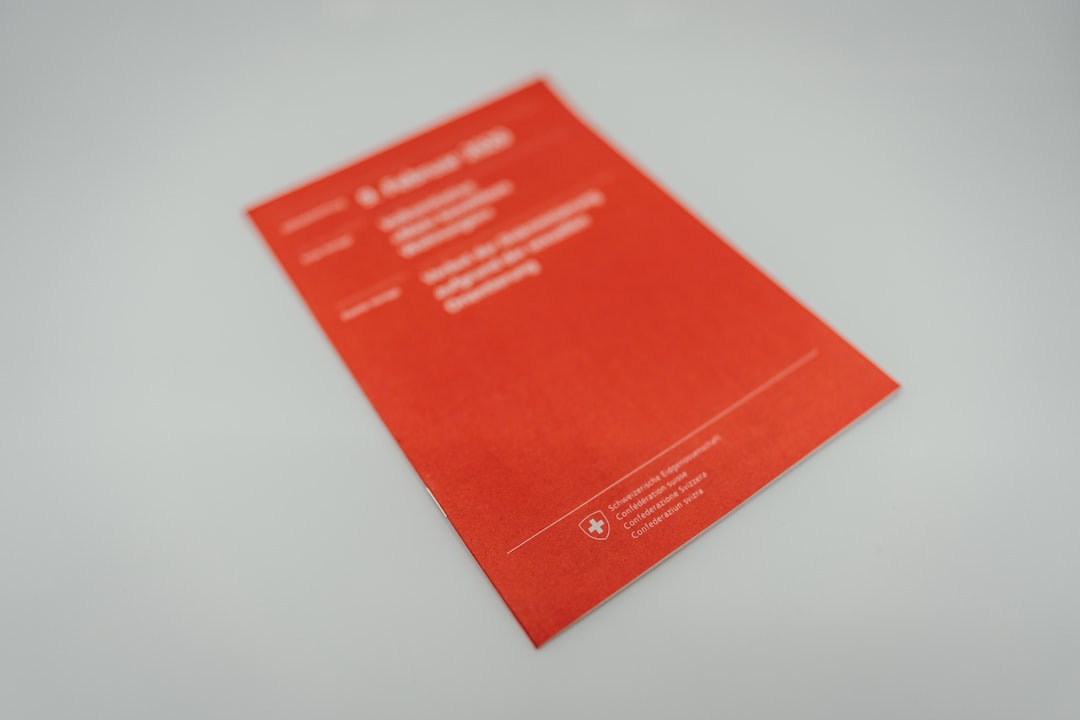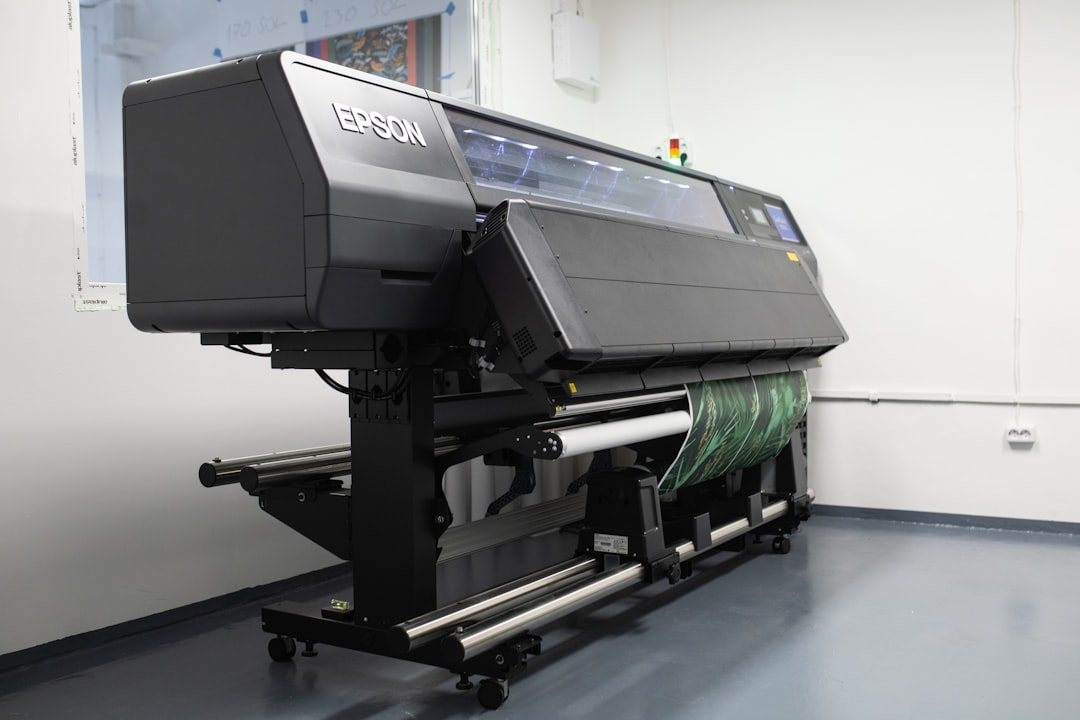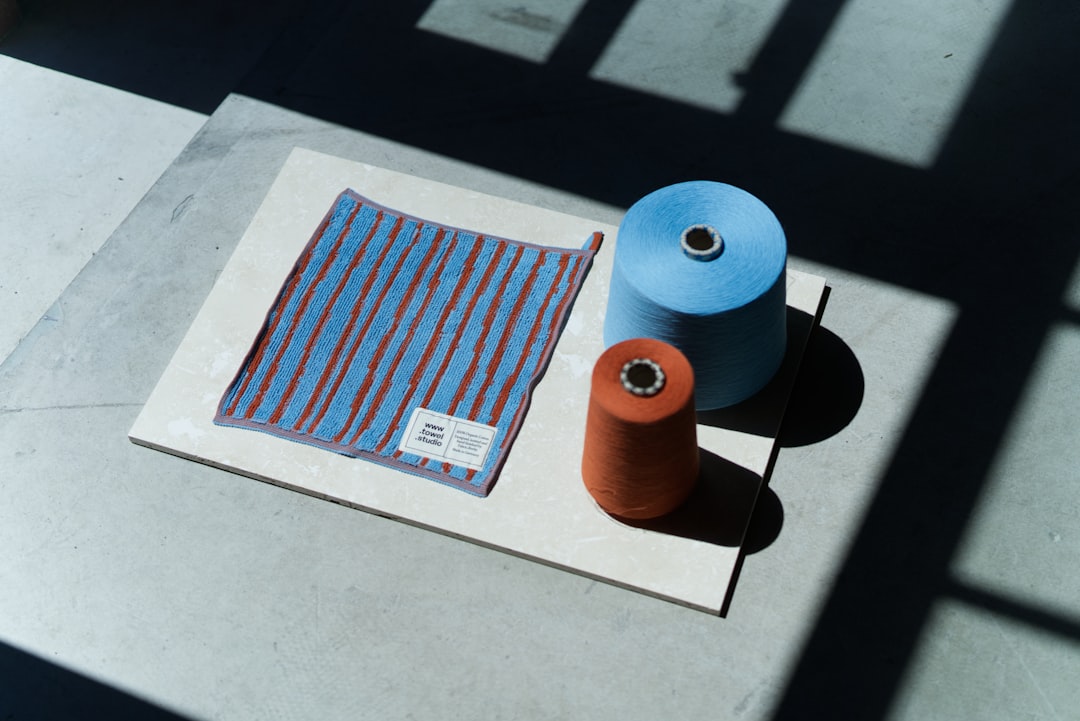

Engage prospects with a scan and streamline customer engagement with FREE QR code marketing tools by Sona – no strings attached!
Create a Free QR CodeFree consultation

No commitment

Engage prospects with a scan and streamline customer engagement with FREE QR code marketing tools by Sona – no strings attached!
Create a Free QR CodeFree consultation

No commitment
Businesses in the Foil Printing Services sector often struggle to move prospects from initial fascination with premium print assets to meaningful engagement and conversion. Even as metallic business cards, luxury foil-embossed brochures, or custom gold foil stickers capture attention, a common frustration emerges: many high-value prospects remain untracked and anonymous, causing potentially lucrative opportunities to slip through the cracks.
Traditional print campaigns frequently hit a wall at mere brand awareness. Marketers are left in the dark, unable to see which recipients are showing buying intent versus those treating printed collateral as disposable handouts. This lack of visibility prevents timely follow-up, leaving businesses unable to capitalize on critical moments of interest and opening the door for competitors to engage first.
Embedding QR codes into foil printing collateral allows organizations to finally bridge the offline-to-online chasm. Each scan transforms physical marketing investment into a measurable, interactive experience, delivering real-time engagement insights, surfacing intent signals, and enabling timely, relevant follow-up. This evolution ensures that every piece of foil-enhanced print does more than just impress; it serves as a direct, data-driven step toward conversion and lasting customer relationships. For a deeper primer on strategy, see qr codes in marketing.

QR codes offer a practical remedy to the lost visibility and missed opportunities plaguing foil printing marketers. By linking high-impact print assets directly to digital conversion paths, businesses gain immediate insight into who is engaging, when, and how often. This closes the loop on previously anonymous interactions and creates a clear handoff to digital nurturing and sales conversations.
Replace outdated analog processes with QR-powered experiences to reduce friction and accelerate outcomes. Paper forms can become instant mobile forms, glossy brochures can unlock dynamic galleries and quote requests, and business card exchanges can turn into immediate contact saves and booking flows. Modern QR platforms like Sona QR centralize management, automate routing, and enrich analytics, turning every scan into an actionable signal.
Modern platforms now automate buyer journeys, track touches, and surface engagement signals, eliminating delays and manual errors that often let high-value prospects slip away. With QR codes on foil-printed assets, you can design campaigns that are both visually striking and operationally efficient, creating a stronger, more measurable path to conversion.

A persistent challenge in foil printing is the inability to identify and pursue interested prospects who never submit a form or respond directly. QR codes address this by surfacing engagement from anonymous traffic. Customers admiring premium foil business cards or luxury packaging can immediately transition from offline curiosity to tracked, online prospects with a single scan. This reclaims moments that would otherwise be lost and translates attention into data-backed action.
Dynamic QR codes also relieve campaign managers from the headache of reprinting costly materials due to offer changes or outdated information. Finished pieces like metallic brochures, appointment cards, and lookbooks often have long shelf lives. With the flexibility to update landing destinations on the fly, you protect your budget and sustain campaign relevance without sacrificing the premium quality of your print.
QR codes turn every foil-enhanced print asset into a digital gateway and an analytics-enabled channel. You gain clarity on who is engaging, what content drives interest, and which follow-ups convert. This supports smarter resource allocation, faster sales response, and stronger attribution across campaigns and channels.
Different QR formats suit different business goals. In foil printing services, the most useful formats are those that move a prospect from inspiration to action quickly, while preserving the premium look and feel of your print.
Use formats that match where the QR will live and what you want the user to do. On a gold foil business card, a vCard or booking link speeds up networking. On a brochure or catalog, a web link or form QR supports deeper exploration and quote requests. For product packaging, a form or app download QR bridges onboarding and upsell moments with ease.
With these formats thoughtfully deployed, foil printing firms can tie specific touchpoints to resultant sales activity and customer lifecycle outcomes. This closes the data gap that has long hindered campaign assessment and elevates the role of print in a modern marketing stack.

The biggest missed opportunities often hide in transitions: when tactile print changes hands at an event, lands on a desk, or adds luxury to packaging. These moments are rich with intent yet notoriously hard to measure. Without a mechanism to capture signals, most prospects stay invisible and follow-up remains a guessing game.
Deploy QR codes wherever your premium print already commands attention. Position them with clear calls to action and ensure scannability on metallic finishes by using contrasting backgrounds, matte coatings, and adequate code sizing. For additional production tips, review this guide on print and QR codes. By strategically placing QR codes on the assets below, you transform passive impressions into measurable engagements.
Focusing QR deployment on high-value, hard-to-track interactions surfaces new leads, prevents attrition, and supports proactive engagement. Prioritize placements that historically suffered from attribution challenges, then use data to double down on what performs.

Real business impact comes from matching QR experiences to common customer interactions. When you design for the moment, you signal value and reduce friction. The use cases below are proven ways to turn foil-printed beauty into digital action and revenue lift.
Position each QR code with a clear benefit-driven call to action. Add supportive microcopy like “Scan for instant quote” or “Scan for VIP pricing” to set expectations and increase scan rates. Use dynamic QR codes to keep offers fresh and targeted without reprinting.
Every scenario upgrades traditional print interactions into consistently measurable and actionable pipelines. This helps foil printers and brands avoid the pitfall of static outreach and instead nurture interest with data-backed sequences.
Each QR scan is a signal that captures intent, context, and behavior. By deploying multiple QR codes across touchpoints, you can segment your audience automatically and feed precise retargeting and follow-up campaigns. For foil printing services, this often means distinguishing between designers, brand managers, procurement teams, and small business owners who each have different needs and buying stages.
Use scan data to trigger the right message at the right time. A scan from a trade show booth might cue a next-day outreach with a relevant case study, while a scan from a mailer could launch a special quote incentive. The more you align content and timing to the scan context, the higher your conversion rates. For deeper strategy, see Sona on intent data.
This workflow closes the loop between offline branding and digital nurturing. It surfaces hidden opportunities, helps you allocate resources intelligently, and supports a more predictable path from first impression to closed revenue.
Consistent pipeline growth depends on eliminating channel silos. Many foil printing prospects first engage offline then research online. QR codes unify inbound efforts by making every print asset a measurable entry point and by connecting scan activity to digital nurturing across email, social, and ads.
When you integrate QR codes with centralized analytics, you can compare channel performance and establish clearer attribution. This reduces waste, strengthens buy-in for premium print budgets, and helps you shift spend toward the placements that deliver the best return.
Centralized QR analytics through platforms like Sona QR show which channels drive engagement and which messages resonate. This helps your team avoid blind spots that can undermine campaign ROI, while reinforcing premium print as a core contributor to growth.
Great results start with a deliberate plan. In foil printing services, that means aligning QR strategy with real buyer behavior, ensuring scannability on specialty finishes, and building a clear measurement framework before launch. The checklist below covers the essentials so you can move confidently from concept to conversion.
Before you start, decide how you will handle identity resolution and attribution. Will your codes be personalized or shared, and how will you connect scans to contacts in your CRM? Clarify these points early to avoid data gaps and to empower timely, informed follow-up.
Start with a clear, measurable outcome. For foil printing, common hurdles include quantifying which segments respond best to premium pieces or accelerating slow conversion cycles typical of high-end print. Choose goals such as scan volume, quote requests, demo bookings, or reorders, then set targets by channel and asset type.
Choose a QR format that matches your goal and future needs. In most cases, dynamic QR codes are the best fit because they provide tracking, editability, and personalization. Reserve static codes for evergreen destinations that require no data capture or routing.
Scannability is the foundation of success. Foil surfaces can introduce glare, reflections, and low contrast that cause failures. Control the environment with design choices and thorough testing before committing to production.
Roll out your codes on the placements most likely to reach and convert your audience. Prioritize channels that historically lacked measurement or had slow handoffs to sales.
Analytics are where QR investments prove their worth. Use a platform such as Sona QR to centralize code management, monitor scan behavior, and connect to CRM and ad platforms for closed-loop reporting.
Many foil printing firms struggle to connect physical marketing spend to closed deals, making it challenging to justify continued investment in premium print. Robust QR analytics make it possible to attribute outcomes, refine messaging, and scale what works. With dynamic QR codes, each scan captures a data-rich event that can be tied to contacts, opportunities, and revenue.
The analytics journey does not stop at the scan. It extends through form completion, sales conversations, proofs approval, and reorder behavior. Integrations with tools like HubSpot, Salesforce, and Sona.com ensure that the same signal threads through the entire funnel for accurate attribution and timely action.
This comprehensive approach transforms premium foil assets from cost centers into accountable, revenue-driving channels. It empowers data-backed decisions, strengthens collaboration between marketing and sales, and increases confidence in premium print investments.
QR success in foil printing starts with scannability and ends with automation. The middle is where messaging, design, and timing intersect with buyer intent. The tips below reflect common constraints in this vertical such as metallic glare, specialty finishes, and high-cost reprints, as well as opportunities to personalize experiences and accelerate sales.
Educate teams and customers on the value of scanning. People scan when they know what they get, believe it is relevant, and can do it quickly. Clear CTAs, fast-loading pages, and immediate utility are the levers that turn scans into conversions.
Strategic implementation ensures each interaction, no matter how brief, becomes a high-value, data-rich opportunity for engagement and growth. Paired with dynamic routing and identity resolution, QR codes elevate foil printing assets into performance channels.

Real-world results help teams envision what is possible and rally stakeholders around a smart print-to-digital plan. The examples below demonstrate how foil-printed assets with QR codes can shorten response times, clarify attribution, and increase conversion rates without compromising on luxury appeal.
These outcomes are achievable with careful planning. Use variable data printing for unique codes, test scannability on metallic finishes, and integrate scan data with your CRM. Create follow-up sequences that use scan context and content preferences captured at the moment of engagement.
These examples highlight how thoughtful QR integration solves the twin challenges of qualification and attribution. The combination of premium foil presentation and a clear mobile path to action turns every piece into a contributor to pipeline and revenue.
The introduction of QR codes has elevated foil printing services from static showcases of craftsmanship to dynamic catalysts for conversion. By proactively addressing challenges like lead invisibility, slow response times, and fragmented campaign tracking, QR-enhanced print offers brands a path to stronger attribution, deeper engagement, and real business results. When analytics and automation are paired with thoughtful design, your premium assets do more than impress; they guide prospects into measurable digital journeys.
Modern foil printing services that harness QR technology eliminate the blind spots that have long limited the value of premium print. By enabling seamless transitions from physical impressions to personalized online experiences, these solutions empower businesses to capture high-intent prospects, accelerate sales cycles, and confidently attribute revenue back to each branded asset. If you are ready to operationalize the approach, platforms like Sona QR make it simple to generate dynamic codes, track performance, and sync scan data to your CRM. Start small with a flagship brochure or business card rollout, measure diligently, and scale what works until every foil touchpoint is both captivating and quantifiably effective. Start creating QR codes for free.
QR codes have revolutionized the foil printing services industry by transforming traditional printed materials into interactive, measurable marketing tools. Whether it’s driving customer acquisition through engaging packaging, enhancing customer experiences with instant product information, or enabling detailed tracking of campaign performance, QR codes unlock new avenues for conversion and growth. Imagine knowing exactly which foil-printed designs are capturing attention and turning prospects into loyal customers in real time.
With Sona QR, you can effortlessly create dynamic, trackable QR codes tailored for your foil printing projects. Instantly update campaigns without the need for costly reprints, monitor engagement down to each scan, and directly link offline interactions to online sales and revenue. No more guesswork—just actionable insights that maximize the impact of every foil-printed piece.
Start for free with Sona QR today and transform your foil printing services into powerful, conversion-driving assets that deliver measurable results.
Common types include metallic business cards, luxury foil-embossed brochures, custom gold foil stickers, foil banners, and foil packaging labels.
Choose a foil printing service that offers customization like unique QR codes for each card, high-quality metallic finishes, and ensures scannability by using matte coatings and proper contrast.
Yes, foil printing services offer custom designs such as personalized brochures, appointment cards, stickers, and business cards that can include dynamic elements like embedded QR codes.
While the article does not specify exact costs, foil printing is presented as a premium service with higher production value and potentially higher costs, but it can be more cost-effective when combined with dynamic QR codes that avoid costly reprints.
Foil printing adds a luxury and premium look to print assets, capturing attention and elevating brand perception while, when combined with QR codes, it turns physical materials into interactive, measurable marketing tools.
QR codes bridge offline print to online engagement by tracking scans, capturing prospect intent, enabling timely follow-up, and turning static print into interactive, data-driven marketing assets.
Dynamic QR codes are preferred for flexibility and tracking, with formats including web links, vCards, forms, SMS or email messages, app downloads, and dynamic URLs that can be updated post-print.
Place QR codes on high-value touchpoints such as business cards, brochures, packaging stickers, event signage, direct mail, and trade show materials, ensuring clear calls to action and good scannability.
Steps include defining campaign goals, selecting QR code types, designing and testing for scannability, deploying across key channels, and tracking performance to optimize results.
Use QR analytics platforms to track scan data by time, location, and asset, integrate with CRM and sales tools for lead nurturing, and attribute revenue by linking scans to closed deals.
Yes, QR codes capture engagement signals from previously anonymous interactions, streamline lead capture by replacing paper forms, and provide contextual data to prioritize sales follow-up.
Ensure adequate size, use high contrast colors, apply matte coatings or laminates over the code, avoid placing codes directly on reflective foil areas, and conduct thorough device and lighting tests.
Dynamic QR codes allow you to change the destination URL after printing, enabling campaign pivots, offer updates, localization, and A/B testing without reprinting premium materials.
Uses include interactive brochures, event materials that capture intent, fast lead capture, warranty registration on packaging, product onboarding, and personalized business card networking.
They unify offline and online channels by making print assets measurable entry points, enabling centralized analytics, better attribution, and coordinated nurturing across email, ads, and CRM systems.
Use unique QR codes per asset, add UTM parameters, automate post-scan workflows, train staff to promote scanning, use clear CTAs, and innovate with eco-friendly materials aligned with brand values.
Yes, scan data segments audiences by behavior, location, and funnel stage, feeding CRM and ad platforms to deliver personalized follow-up and improve conversion rates.
Examples include luxury tradeshow business cards increasing follow-up by 35 percent, metallic brochure mailings boosting consultations by 27 percent, and foil sticker packaging driving referral and upsell programs.
Use Sona QR's trackable codes to improve customer acquisition and engagement today.
Create Your FREE Trackable QR Code in SecondsJoin results-focused teams combining Sona Platform automation with advanced Google Ads strategies to scale lead generation

Connect your existing CRM

Free Account Enrichment

No setup fees
No commitment required

Free consultation

Get a custom Google Ads roadmap for your business






Launch campaigns that generate qualified leads in 30 days or less.
